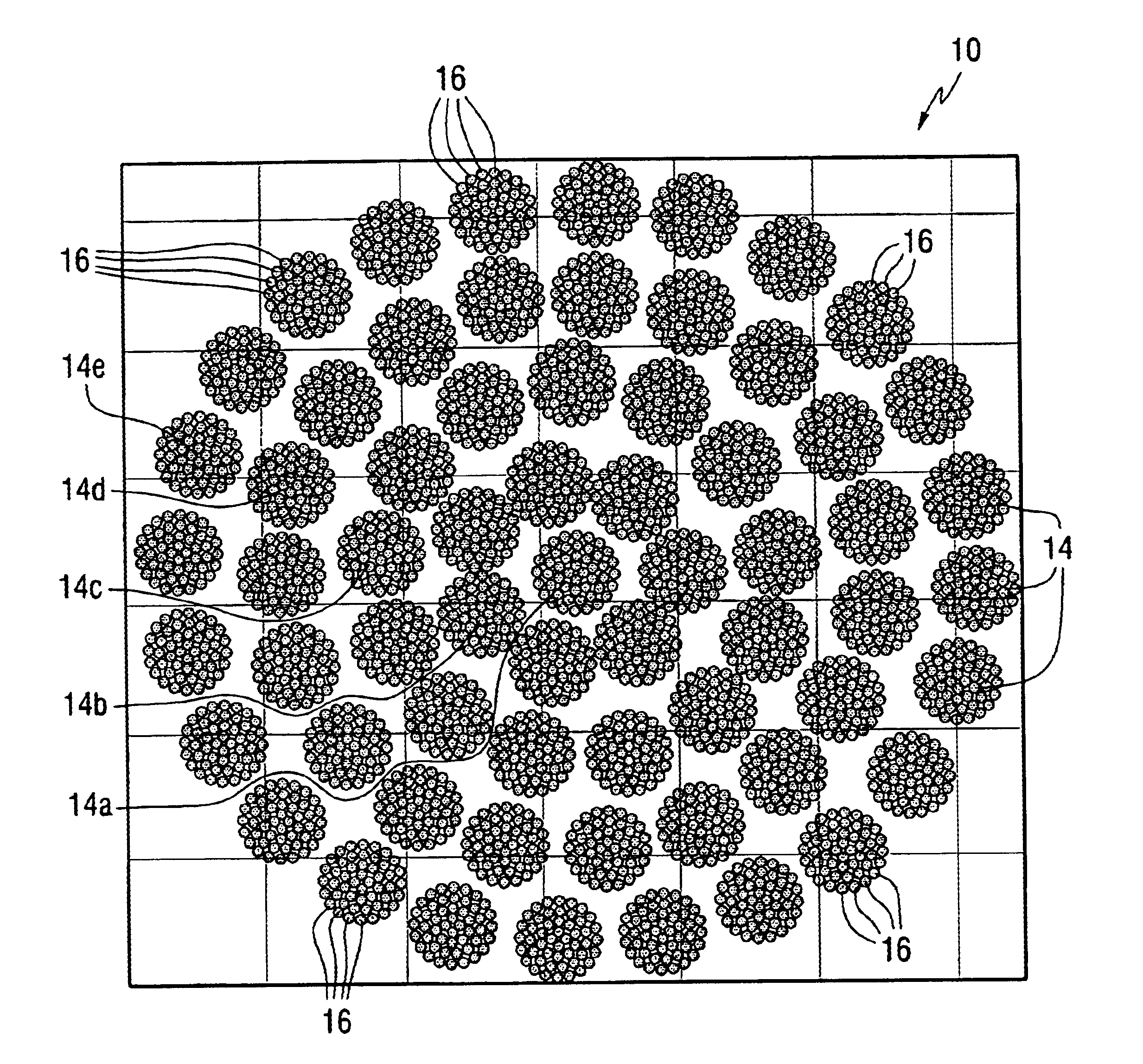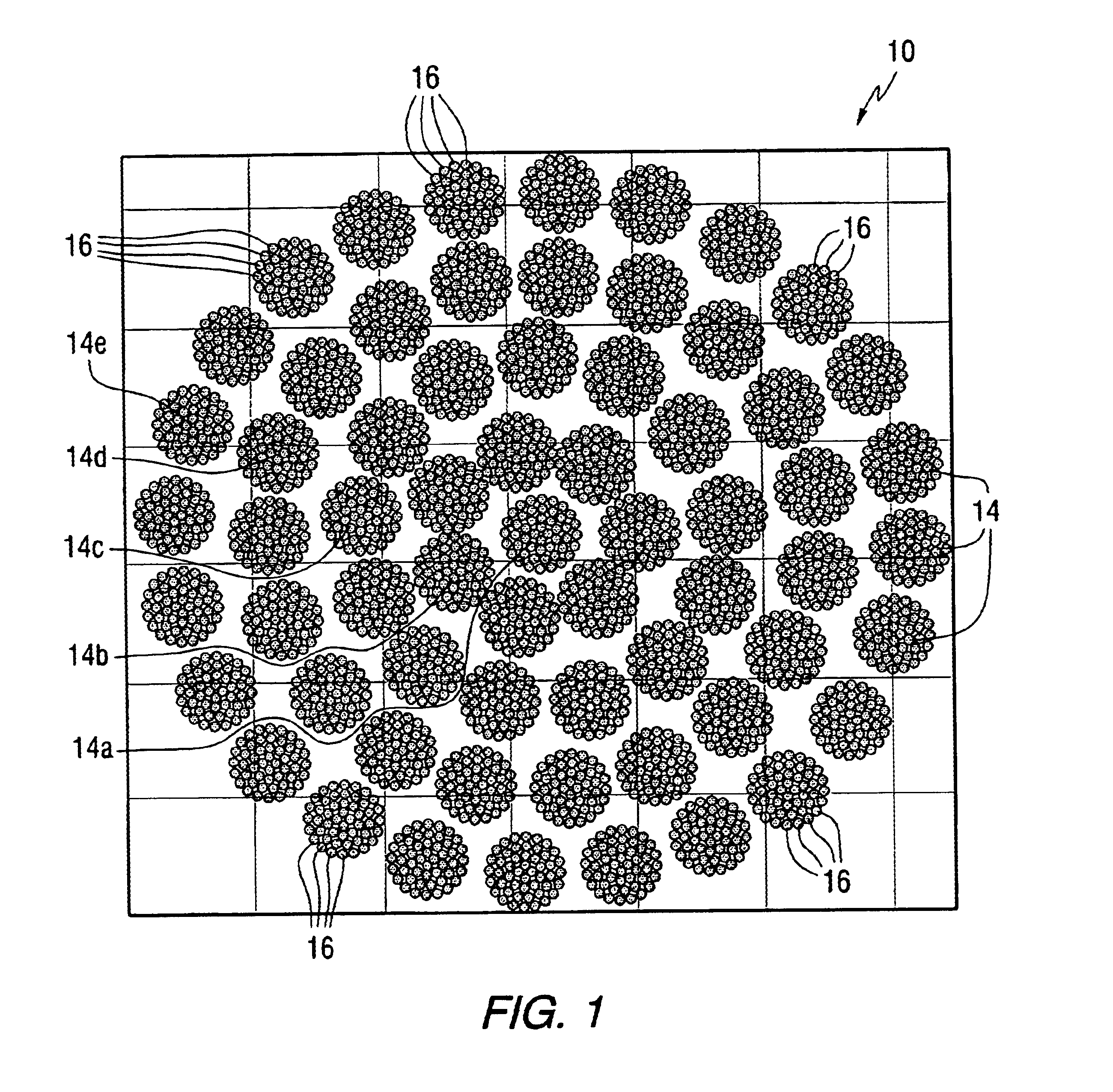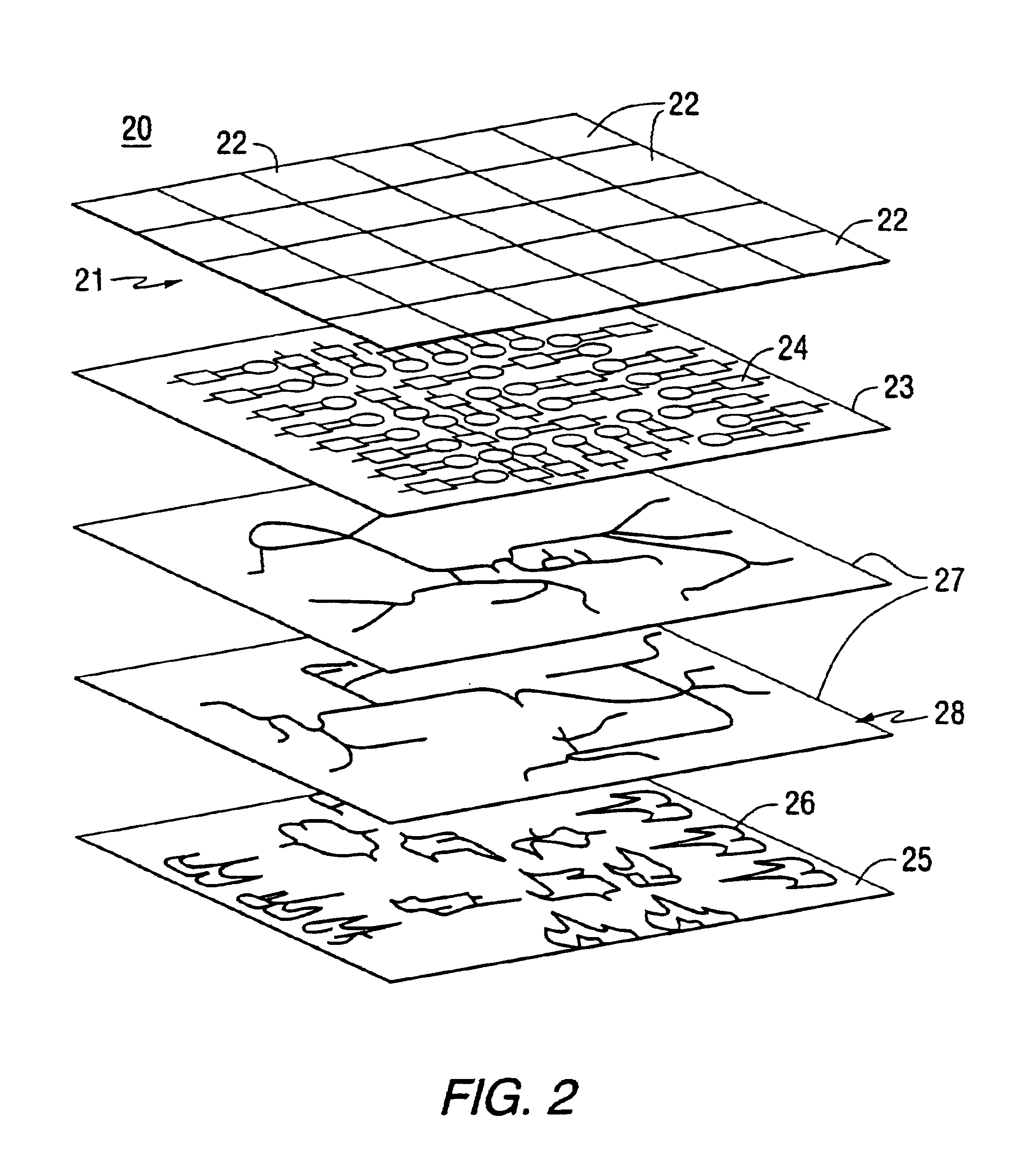Antenna arrays formed of spiral sub-array lattices
a spiral sub-array and spiral technology, applied in the structural form of individual energised antenna arrays, resonant antennas, radiating elements, etc., can solve the problems of array antennas not without disadvantages, destructive addition of electromagnetic fields, etc., to reduce the side lobe of radiation pattern, widen the antenna bandwidth, and the effect of increasing the spacing of elements
- Summary
- Abstract
- Description
- Claims
- Application Information
AI Technical Summary
Benefits of technology
Problems solved by technology
Method used
Image
Examples
Embodiment Construction
The present invention will now be described more fully hereinafter with reference to the accompanying drawings, in which preferred embodiments of the invention are shown. This invention may, however, be embodied in many different forms and should not be construed as limited to the embodiments set forth herein. Rather, these embodiments are provided so that this disclosure will be thorough and complete, and will fully convey the scope of the invention to those skilled in the art. Like numbers refer to like elements throughout.
FIG. 1 illustrates an array antenna 10 of the co-pending, commonly-owned patent application, comprising a plurality of preferably identical aperiodic sub-arrays 14, where antenna elements 16 of each aperiodic sub-array 14 are configured in concentric circles as shown. The sub-arrays 14 are then aperiodically arranged to form the array antenna 10. The array antenna 10 can be a two or three dimensional structure, for example a polygon, a cube, other polygonal thre...
PUM
 Login to View More
Login to View More Abstract
Description
Claims
Application Information
 Login to View More
Login to View More - R&D
- Intellectual Property
- Life Sciences
- Materials
- Tech Scout
- Unparalleled Data Quality
- Higher Quality Content
- 60% Fewer Hallucinations
Browse by: Latest US Patents, China's latest patents, Technical Efficacy Thesaurus, Application Domain, Technology Topic, Popular Technical Reports.
© 2025 PatSnap. All rights reserved.Legal|Privacy policy|Modern Slavery Act Transparency Statement|Sitemap|About US| Contact US: help@patsnap.com



